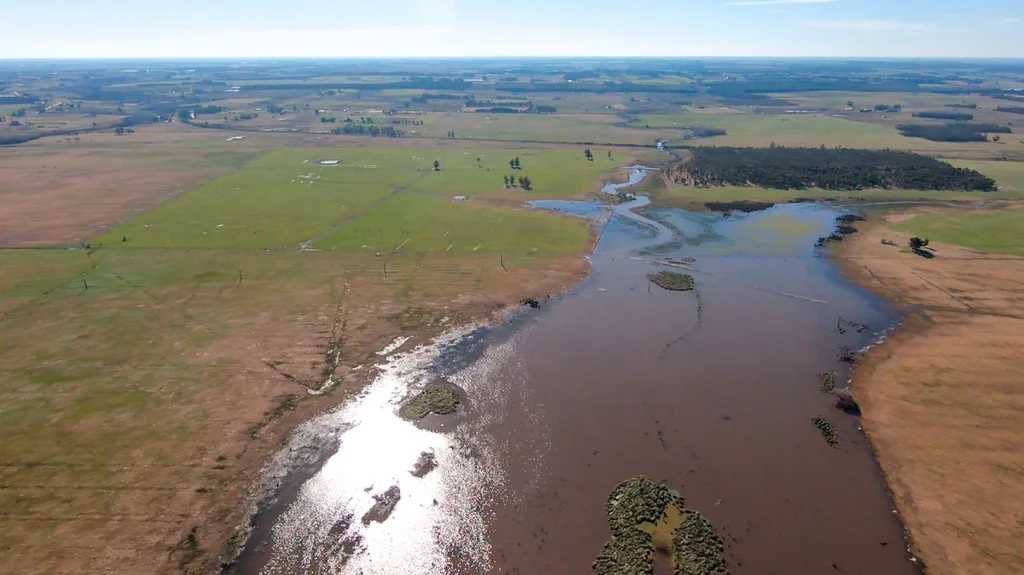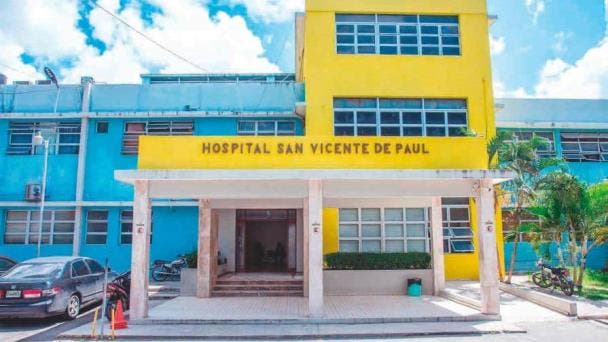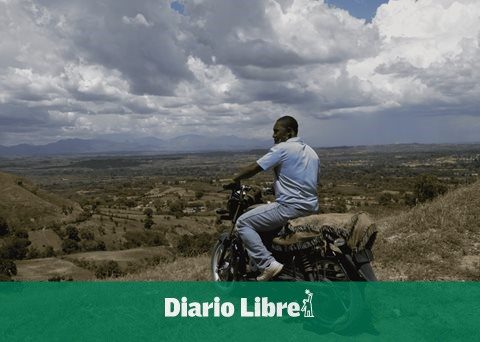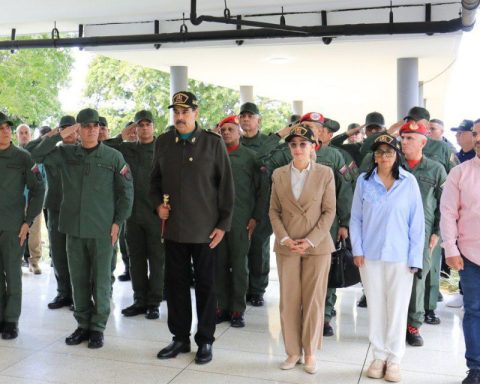In April 2020, a few days after taking office, the OSE authorities encountered a complex panorama that worried them. The few rains in recent months had caused a drop in reserves from various parts of the country, including the Swan Lagoon (which supplies the population that lives between Neptunia and Parque del Plata) where there was water left for a week.
Even though the rains came and the anxiety passed, the concern for what could happen with this “system” -as the technicians call it- continued and motivated that a few months later the board of directors made a resolution that today -in view of the results – is controversial and has provoked internal reproaches, although it has received criticism from the beginning for technical and environmental reasons.
Its about transfer of the Solís Chico stream, a work in which the agency invested almost US$ 2 million ($77 million) but does not use.
“We are making efforts to be able to use it,” acknowledged a member of the OSE board, despite the fact that scientists and technicians understand that it does not have authorization.
The Swan Lagoon supplies some 22,800 connectionswhich represent about 100 thousand people in summer, according to data from the agency. This summer’s drought caused a low that forced OSE to prohibit the use of drinking water for “non-priority purposes” and establish sanctions for those who fail to comply with this measure. At this time, reservations are enough for just over a week.
despair in the face of drought
The play was initially costed at $49 million and approved by the OSE board of directors in October 2020. It meant an extension of the award that Teyma had to carry out the sanitation in the City of the Coast, which was observed by the Court of Auditors although the expenses were reiterated by OSE, of accordance with resolutions reviewed by The Observer.
The board argued that the National Emergency System (Sinae) was forecasting a mild/moderate drought for the spring and summer south of the Río Negro, which presupposed a “water deficit” in the contributions to the Laguna del Cisne.
Photo: Leonardo Carreno.
The Laguna del Cisne is 1.8 meters lower than usual
The authorities pointed out that due to the pandemic, more people had settled in that area and that there would be more internal tourism because the borders were closed, so there would be an “increase” in the consumption of drinking water in spas.
“A novel alternative has been proposed, resorting to a new water source represented by the Solís Chico”, says the resolution, which details that the “feasibility” of carrying out “a raw water transfer work” from the stream to a tributary course to the Laguna del Cisne had been studied.
“It will make it possible to guarantee a sustained contribution” regardless of other “water contributions”, which could “be affected by forecast weather conditions”adds in another of the recitals.
The transfer would consist of the installation of a provisional water intake with a submersible pump at the height of the Ruta 8 bridge, where the Solís Chico runs, and the construction of an oriented PVC pipe 40 centimeters in diameter and 5.8km long. long than would discharge the water in a tributary ravine of the Laguna del Cisne.
But after this approval the problems began.
The members of the Laguna del Cisne and Arroyo Solís Basin commissions claimed that they were not informed and that they found out from the press (the Presidency website had announced it), so they recalled that it was mandatory to discuss the issue in those areas . In turn, the work did not have the necessary environmental authorizations and shortly after the Canelones Municipality said that it had “no knowledge” of the details.
Faced with this situation, OSE presented the project at a session of the Laguna del Cisne Basin Commission on November 26, 2020. It indicated that the intention was to start the transfer in February 2021, which was the first part —by financial reasons—of a larger proposal that included the construction of a dam on the Solís Chico, a new water treatment plant and connection pipes to the system.
After the presentation, Dinama technicians (which later – on January 1, 2021 – would go from the Ministry of Housing to the Ministry of Environment) They analyzed the works and warned that the best thing was not a transfer of basins but direct pumping from the Solís Chico to the Laguna del Cisne water treatment plant since by “mixing the waters” there was environmental risks such as the development of cyanobacteria or the introduction of “exotic freshwater species”.
SBI He again stated that he could not build the entire pipeline in a single stage (18 km instead of 5.8 km), that he could do it in three, but that he needed at least “immediately” the “temporary solution” that he had proposed.

Photo: Leonardo Carreno.
Trucks supply water to Laguna del Cisne
Dinama agreed as long as the following conditions were met: that OSE submit in less than a year a “compliance commitment” for the three phases of the work; the presentation of a complementary report to Dinagua with technical data; the precautions that the pumping would have; a monitoring plan and contingency actions if algal blooms (such as cyanobacteria) increased or if an “environmental collapse” occurred in Laguna del Cisne, according to the resolution signed by the director of Environmental Quality, Luis Reolon on December 1.
More than two weeks later, on the 17th of that month, OSE sent its institutional commitment in which it stated that it had “planned to finish the executive project of the pipeline section to the Laguna del Cisne Plant in 2021” and on January 12 of 2021, the then Minister of the Environment, Adrián Peña, authorized the extraction and use of water for ten years, as long as all conditions are met that Dinama had put and others that joined in the resolution.
Saltwater
With the project approved, and while a new meeting was being coordinated to advance the monitoring plan, the researcher Guillermo Goyenola —who is part of the delegation of the Eastern Region University Center (CURE) in the basin commissions and had been expressing his “great concern” about the issue—went to the area where the intake was going to be installed and extracted samples to analyze in the laboratory.
The results showed that the water was salty and not fresh (as expected) at the chosen place, so he sent an email informing him of the situation.
The identification that the salinity was seven times greater than that registered by Laguna del Cisne caused a new change in the project, which increased its cost by $27 million.
“Given the results obtained with the raw water transfer work, the general management has understood convenient and opportune to extend the scope of these works through extension of the pipeline in a length of 1.4km to the Ruta 8 bridge and install there a new intake in the Solís Chico stream next to the bridge”, says the resolution to expand spending approved by the OSE board of directors on May 5, 2021, which was also observed by the TCR.
Although a new shot location was decided, OSE did not carry out the development of the pipeline up to the water treatment plant that it had promised to carry out in one year, with which the authorization of the Environment was suspended.
new reviews
Despite this, on December 15 of last year, SBI issued a statement in which it reported that the drought and high temperatures had caused “significant drops” in the level of the Laguna del Cisne, which is why had begun to transfer water from the Solís Chico.
“The start of the system’s operation responds to the water emergency situation and the increase in consumption due to the start of the summer season, and it may be interrupted if said situation is reversed,” the document says.

Intendancy of Canelones
Laguna del Cisne supplies about 100 thousand people in summer
According to OSE sources, the operation lasted between December 7, 2022 and January 10, 2023, although the transfer was unsuccessful: the water slipped on the road and did not arrive, so the pumping was insufficient.
The organization’s decision to start transferring unilaterally and initiate an independent monitoring plan was harshly criticized by the CURE delegates, who sent an email on December 28 in which they expressed their discrepancies and asked Environment for a series of Actions.
Without having finished evaluating the extent of the rains that were recorded Thursday and Friday, but anticipating that the drought would extend, OSE technicians planned to fly the area by helicopter to analyze if the stream has some flow and if it is possible to carry out maneuvers with machines to activate the pumping so that the water reaches the ravine.
















